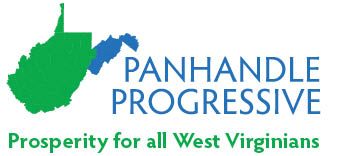Microplastics: An Emerging Concern for Animal and Human Health
I cannot claim to be the most environmentally aware person in my neighborhood. I drive a car that is way too fond of gas, and often leave the lights on when I shouldn’t. So maybe I can be excused for not having heard of microplastics until now.
Plastic, which is a petro-chemical product, is produced in prodigious quantities around the world and has been an important advancement in modern life. But all this plastic has created its own set of problems. One visible problem is the huge amount of plastic trash – containers, fishing nets, straws – that floats around on the surface of the oceans. Plastic products also shed or deconstruct to tiny, sometimes invisible, particles and fibers. The effects of these microplastics are poorly understood now, but they are sure to become a concern for animal and human health.
Since plastics were first widely used in the mid-20th century, roughly 9 billion tons of it have been produced, most of which has become trash. This trash doesn’t biodegrade. A November 26, 2018 article in the excellent magazine High Country News speculates that scientists in the distant future will come upon a brightly colored layer of plastic material deposited in our time. Some geologists today refer to the current period as the Plastocene, and even recognize a type of rock made from naturally fused plastic and sediment called plastiglomerate.
Microplastics are particles smaller than 5 millimeters in diameter. Some have broken down from larger objects like tires or plastic bags. Some have been intentionally manufactured. Concern about microbeads, tiny plastic scrubbers in toothpaste and exfoliant washes, led to a federal ban on them in personal care products beginning in 2017. But perhaps the greatest concern now is the tiny synthetic fibers shed by clothing.
Synthetic fibers are long, thin strands of plastic woven into threads, much like wool. It is estimated that 58% of today’s clothing is woven with them. The fleece that keeps us warm in the winter is full of synthetic fiber. Synthetic blankets, sweaters and shirts also. A researcher in Australia set up three washing machines with special filters that trapped the microfibers after washing fleece garments. He found that they shed up to 1900 tiny fibers each time they were washed. These are too small to be captured by typical washing machine filters or municipal sewage systems. They go directly into our open water.
We are beginning to realize how widely microplastics are being taken up by animals in the lower orders of the food chain, such as invertebrate sea creatures, worms and insects. Mosquito larvae are also capable of eating microplastics and then retaining the plastic as adults. Dragonfly and midges, which also begin life as underwater larvae, are similar. Larger fish and sea animals that predate on the lower level creatures are likely to take up microplastics into their gut. And birds that make meals of insects are equally likely to take up microplastics.
Studies between 1962 and 2012 have revealed that 59% of examined seabird species have ingested plastics. Albatrosses, petrels and shearwaters contain more plastic that other species, probably because they feed in the open ocean and mistake floating plastic for prey. Most of this comes from pecking or otherwise ingesting small pieces of bottle caps, plastic bags, balloons, buttons and plastic lighters.
In the case of birds and other animals, it is unclear whether the plastic transfers from the gut to other organs and muscles. It may simply be ground up and pass through undigested. It is clear, however, that mortality rates increase among the birds that ingest large amounts of plastic. This could be caused by obstruction in the digestive tract, or an inverse correlation between the amount of plastic ingested and the amount of body fat the bird produces.
There have been no proper studies of the effects on humans of plastic uptake by fish and birds. Even scientists who work in the area concede that we have more serious environmental problems like carbon dioxide emissions and coastal erosion that require attention immediately.
But you can expect more attention to be paid to microplastics in the future. One reason is that they often act as sponges for other organic pollutants such as dioxins and PCBs. The molecules of these notably harmful chemicals shelter in the water-free environment found between the long carbon chains that make up plastics. A Japanese study found that 3-millimeter-wide plastic resin pellets found in Tokyo Bay contained organic pollutants one million times their concentration in ordinary sea water.
So how can an environmentally retarded person such as my own personal self act appropriately when it comes to plastic? One thing I do is ask for paper bags at the Food Lion. The check-out people see me coming and immediately go on break. Too bad – they will just have to get used to it. I also try to buy products packaged without plastic, but this is near impossible. Recently I found a big jug of olive oil in a glass bottle and snagged it. The more people do this the sooner manufacturers will get the message. And I will start buying cotton and wool garments, avoiding space-age synthetics. No more Speedo swimsuits.
But aside from modifying individual behavior, what can be done? West Virginia counties and cities still have the freedom to pass ordinances prohibiting one-use plastic packaging like shopping bags and water bottles. Last year, our ultra-libertarian Senator Patricia Rucker led a group of like-minded legislators in an effort to prohibit municipalities from passing ordinances relating to packaging and similar sinister left-wing topics. This effort failed, but she is likely to try again this year. If our newly-found environmental consciousness in Jefferson County has continuing strength, perhaps we can prevail on our local governments to tackle the plastic issue promptly.
